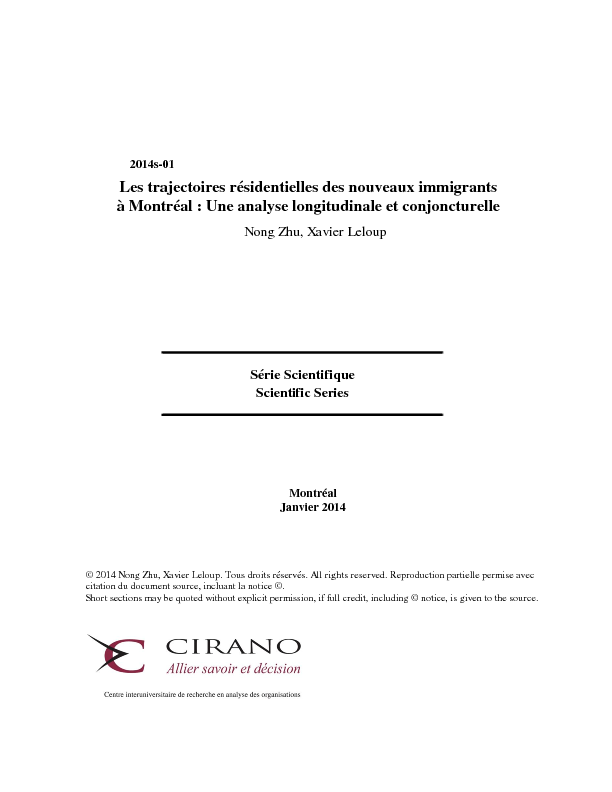Les trajectoires résidentielles des nouveaux immigrants à Montréal : Une analyse longitudinale et conjoncturelle
Using the data from the longitudinal study L'Établissement des nouveaux immigrants (ÉNI), this paper analyses the residential trajectories of new immigrants in Montreal during the 1990's. Two methodologies were applied. First, survival models were used to identify the factors that determine the probabilities of moving and of access to homeownership. Second, the immigrants' mobility within the Montreal metropolitan area was analysed with conditional Logit models. The results show that high-skilled immigrants have a better situation on the housing market, and that there is a strong relation between employment and housing. We also notice a residential dispersion from downtown to the suburbs, especially in spaces where the houses are older and the average income lower. Apart from that, our results illustrate the process of residential concentration, for immigrants from the industrial countries, as well as for people from third-world countries.
[ - ]




